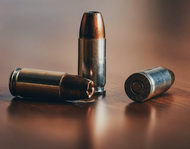JHP vs HP Ammo: Choosing the Right Ammunition
May 22nd 2023
In the realm of firearms and ammunition, selecting the right type of ammo is crucial for self-defense and law enforcement purposes. Among the various ammunition options available, Jacketed Hollow Point (JHP) and Hollow Point (HP) rounds have gained significant popularity. These ammunition types are specifically designed to enhance stopping power and minimize the risk of over-penetration. This article explores the differences between JHP and HP ammo, their advantages and disadvantages, and provides considerations for choosing the appropriate ammunition type.
Understanding Jacketed Hollow Point (JHP) Ammo
Jacketed Hollow Point ammunition, commonly known as JHP, is designed with a lead core covered by a metal jacket, leaving the hollowed-out tip exposed. The jacketing offers structural integrity and prevents barrel fouling, while the hollow point facilitates controlled expansion upon impact. This expansion allows the bullet to transfer energy to the target, resulting in more effective stopping power. The terminal ballistics of JHP rounds make them highly suitable for self-defense and law enforcement applications, as they create larger wound cavities and decrease the likelihood of over-penetration, minimizing the risk to bystanders.
Exploring Hollow Point (HP) Ammo
Hollow Point ammunition, or HP, shares similarities with JHP ammo but lacks the jacketing. HP bullets are composed entirely of lead, with a hollowed-out tip to facilitate expansion upon impact. The expansion characteristics and terminal ballistics of HP rounds are similar to those of JHP ammunition, although they may exhibit slightly different performance due to the absence of jacketing. HP bullets are designed to create larger wound channels and transfer energy to the target more effectively. However, the absence of a jacket may result in increased barrel fouling compared to JHP rounds.
Factors to Consider in Choosing Between JHP and HP Ammo Several factors should be considered when selecting between JHP and HP ammunition:
- Legal considerations: Different jurisdictions may have specific regulations and restrictions on ammunition types. It is crucial to be aware of these laws to ensure compliance.
- Purpose of use: The intended purpose of the ammunition plays a vital role in the selection process. JHP rounds are commonly used for self-defense due to their enhanced stopping power, while HP rounds may be suitable for target shooting and hunting.
- Penetration and over-penetration concerns: Depending on the scenario, over-penetration can pose risks to bystanders. JHP and HP ammo are both designed to minimize over-penetration by expanding upon impact, reducing the likelihood of the bullet passing through the target and causing unintended damage.
- Recoil, muzzle velocity, and accuracy: JHP and HP rounds may exhibit slight differences in recoil, muzzle velocity, and accuracy due to variations in construction. These factors should be taken into account based on personal preferences and firearm compatibility.
- Reliability and feeding issues: Certain firearms may have specific feeding requirements or reliability issues with particular ammunition types. It is essential to consider the compatibility between the chosen ammo and the firearm to ensure reliable functioning.
Real-World Applications and Case Studies To understand the practical effectiveness of JHP and HP ammo, examining real-world applications and case studies can provide valuable insights:
- Successful self-defense scenarios: Numerous documented cases demonstrate the effectiveness of JHP ammunition in stopping threats quickly and efficiently. The controlled expansion and larger wound cavities created by JHP rounds contribute to their effectiveness in self-defense situations.
- Law enforcement use: HP ammo has been widely adopted by law enforcement agencies due to its stopping power and ability to minimize over-penetration. Case studies involving law enforcement encounters highlight the effectiveness of HP rounds in neutralizing threats while reducing the risk to innocent bystanders.
- Comparative analysis: Conducting a comparative analysis of real-world performance between JHP and HP bullets can further inform the decision-making process. This analysis may involve examining factors such as wound characteristics, ballistic gel tests, and documented shooting incidents.
Conclusion
Choosing between JHP and HP ammunition requires careful consideration of individual needs and circumstances. Both JHP and HP rounds offer advantages and are designed to enhance stopping power while minimizing the risk of over-penetration. Legal considerations, purpose of use, penetration concerns, recoil and accuracy, and firearm compatibility should all be taken into account. By understanding the differences and evaluating real-world applications, individuals can make informed decisions when selecting the appropriate ammunition for self-defense and law enforcement purposes. Ultimately, the goal is to ensure effective stopping power while minimizing the risk to innocent bystanders, providing peace of mind in critical situations.


